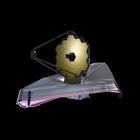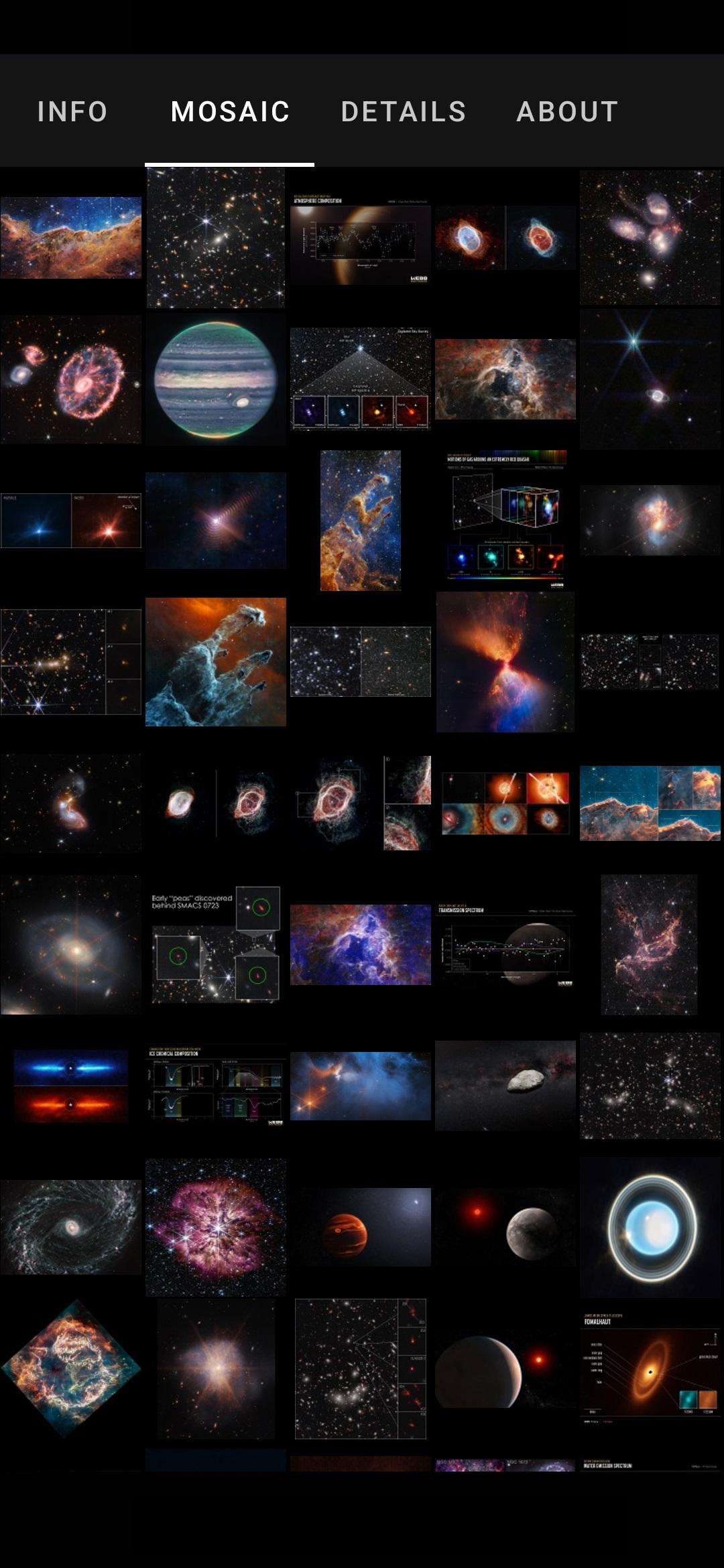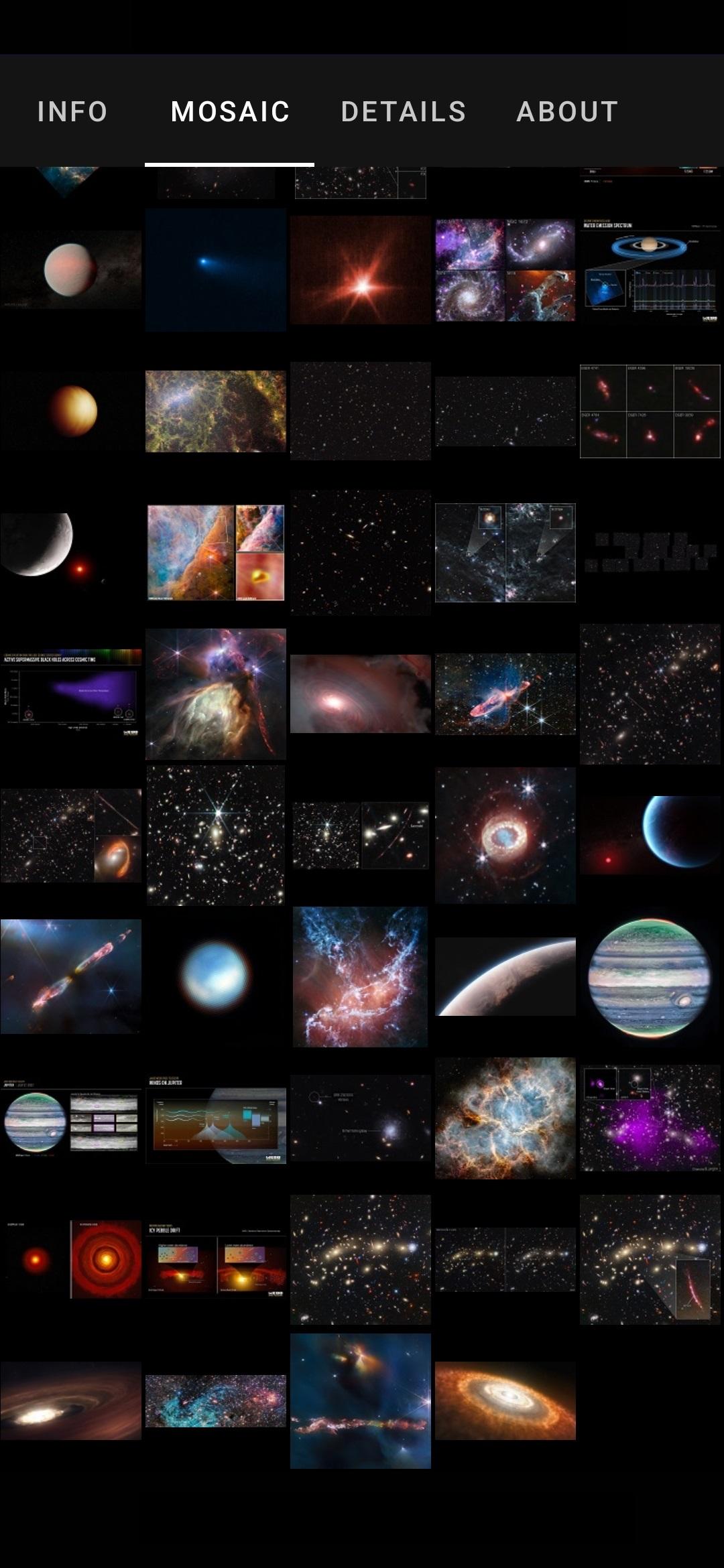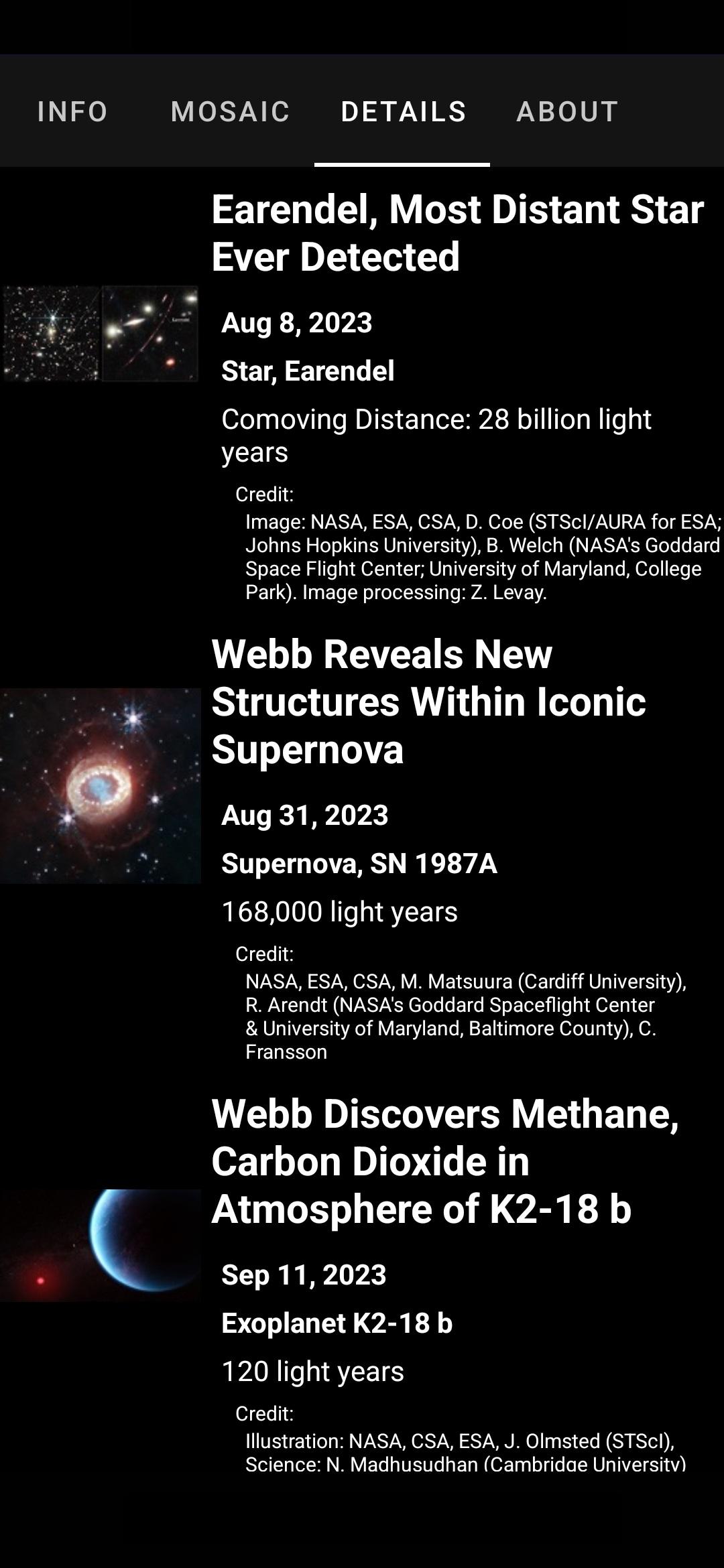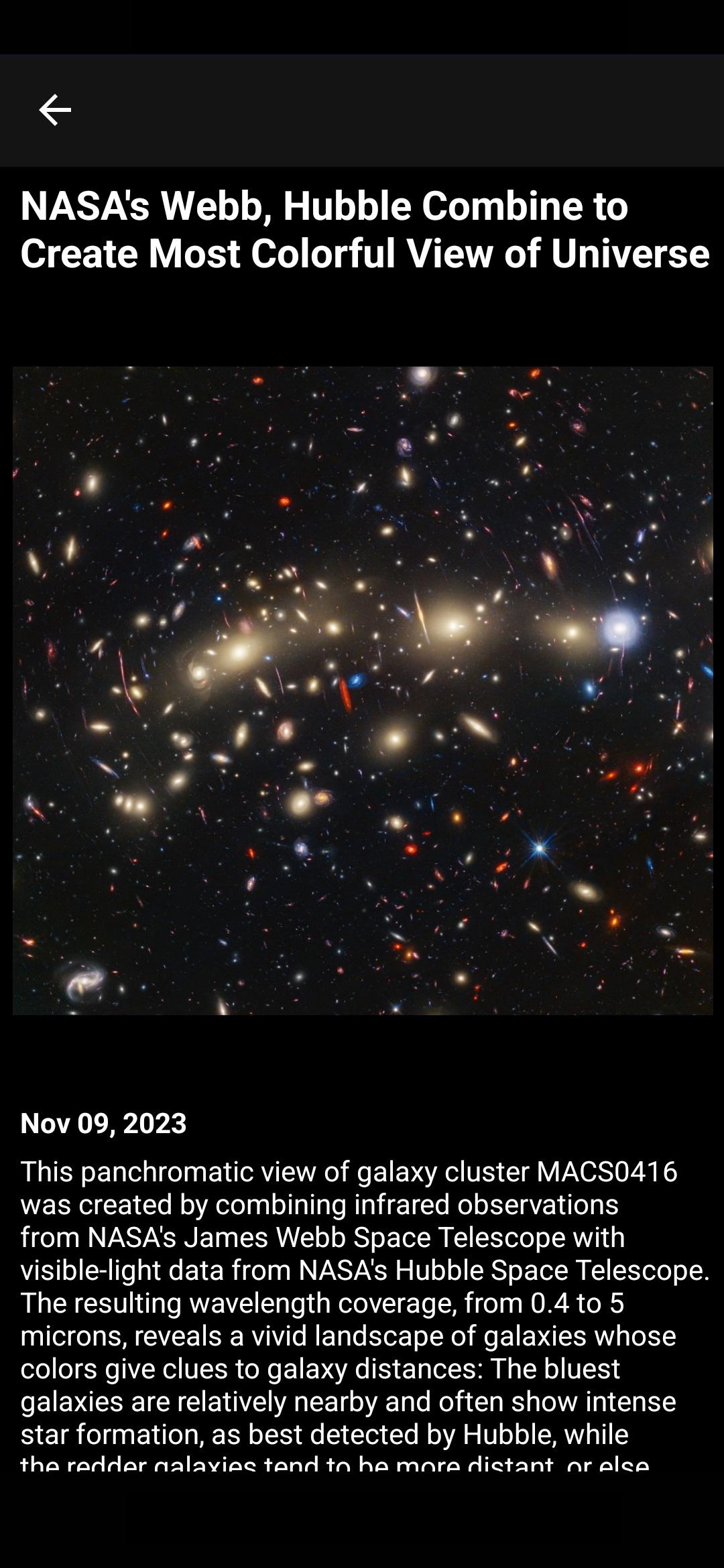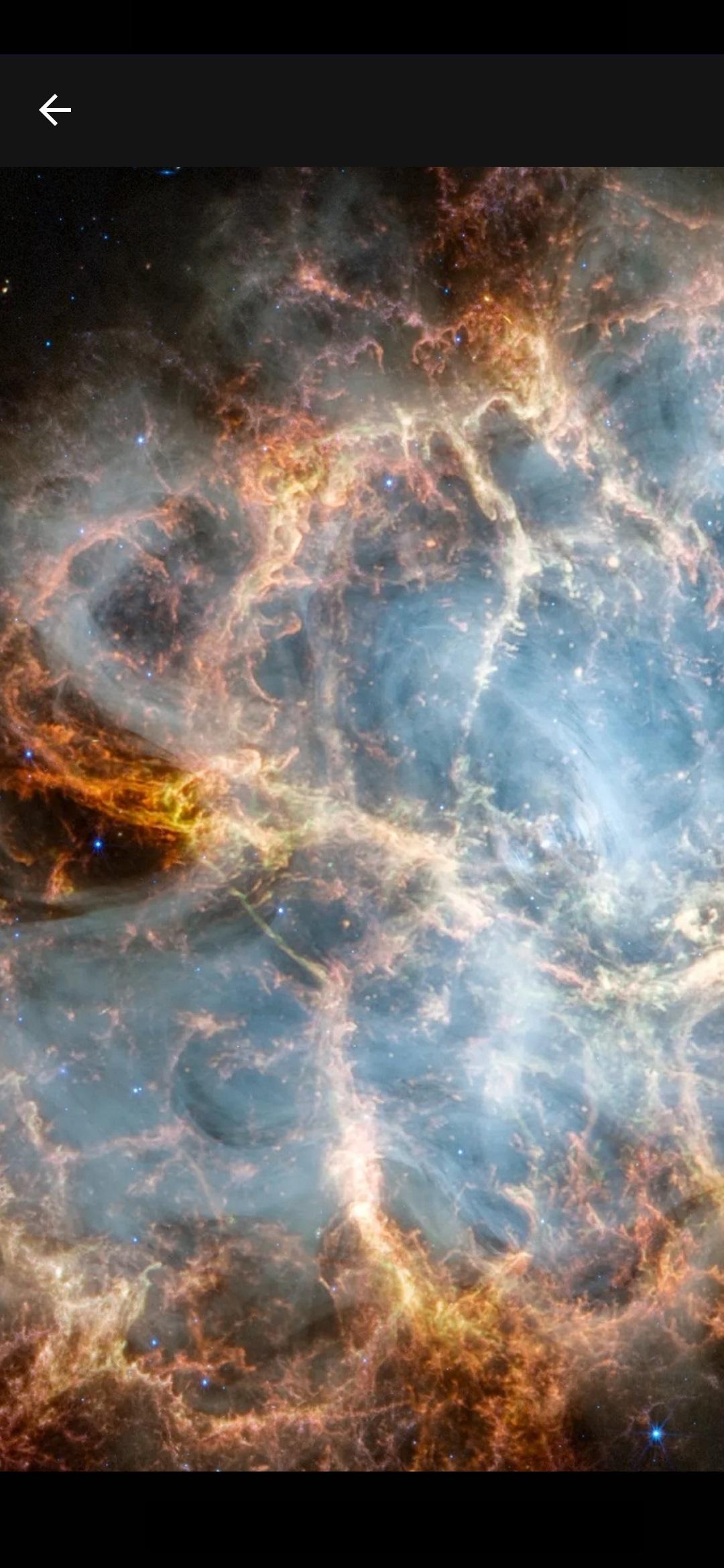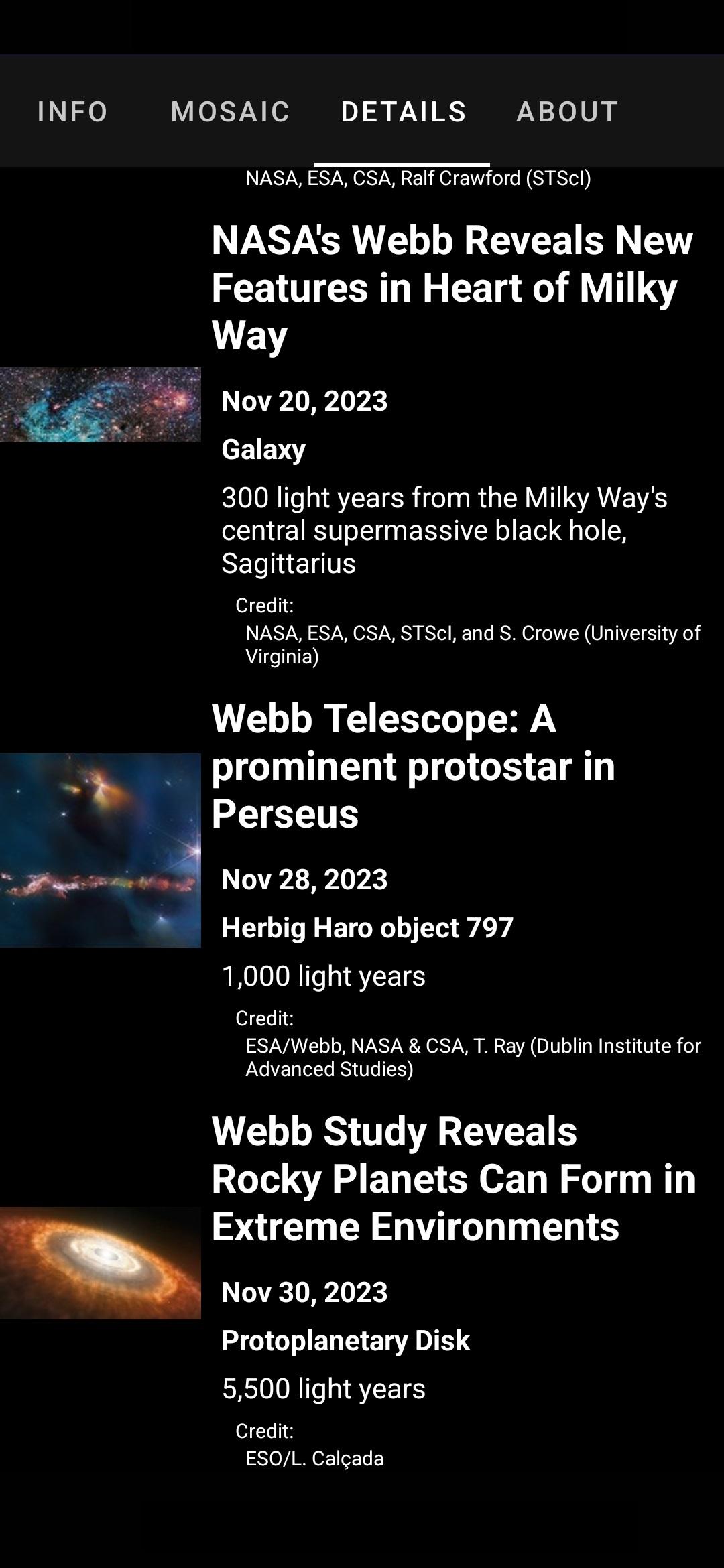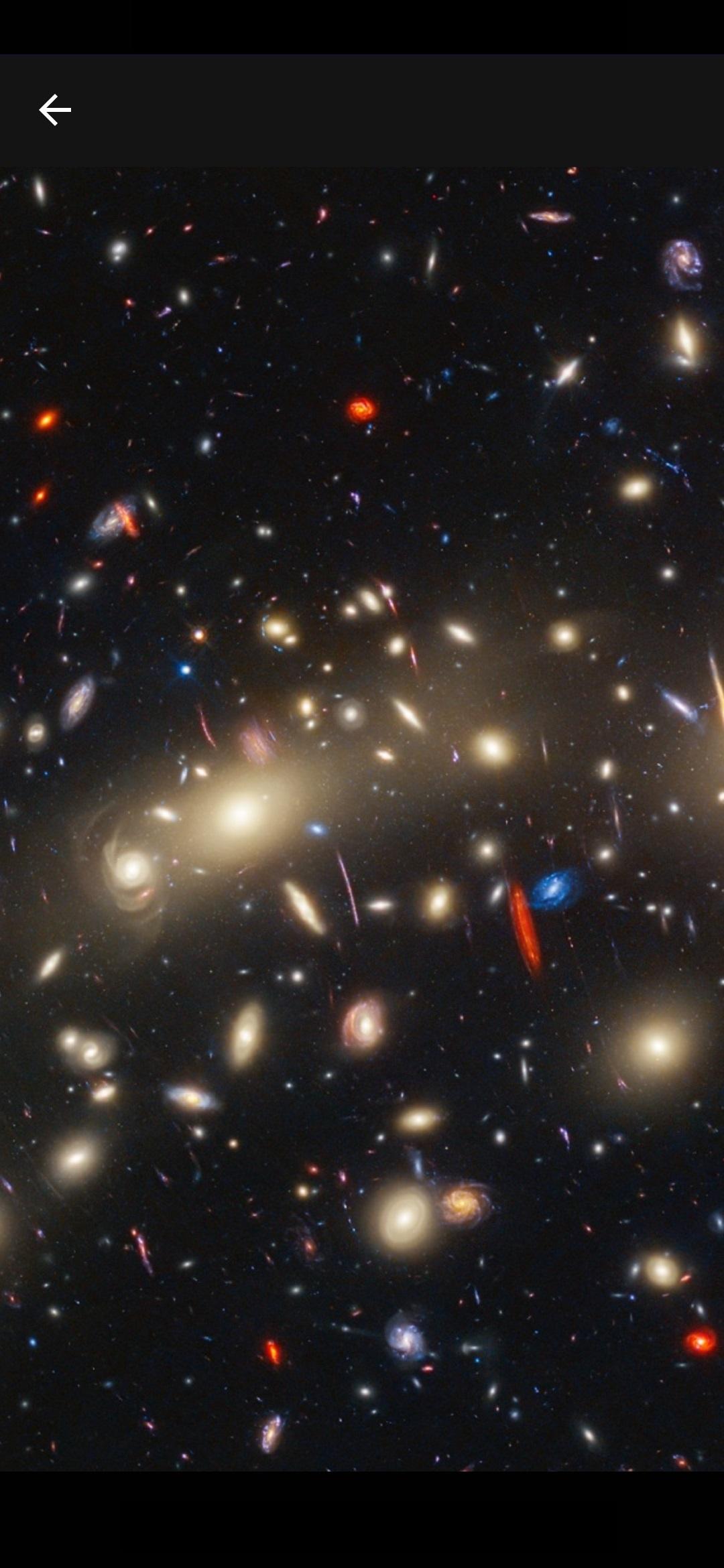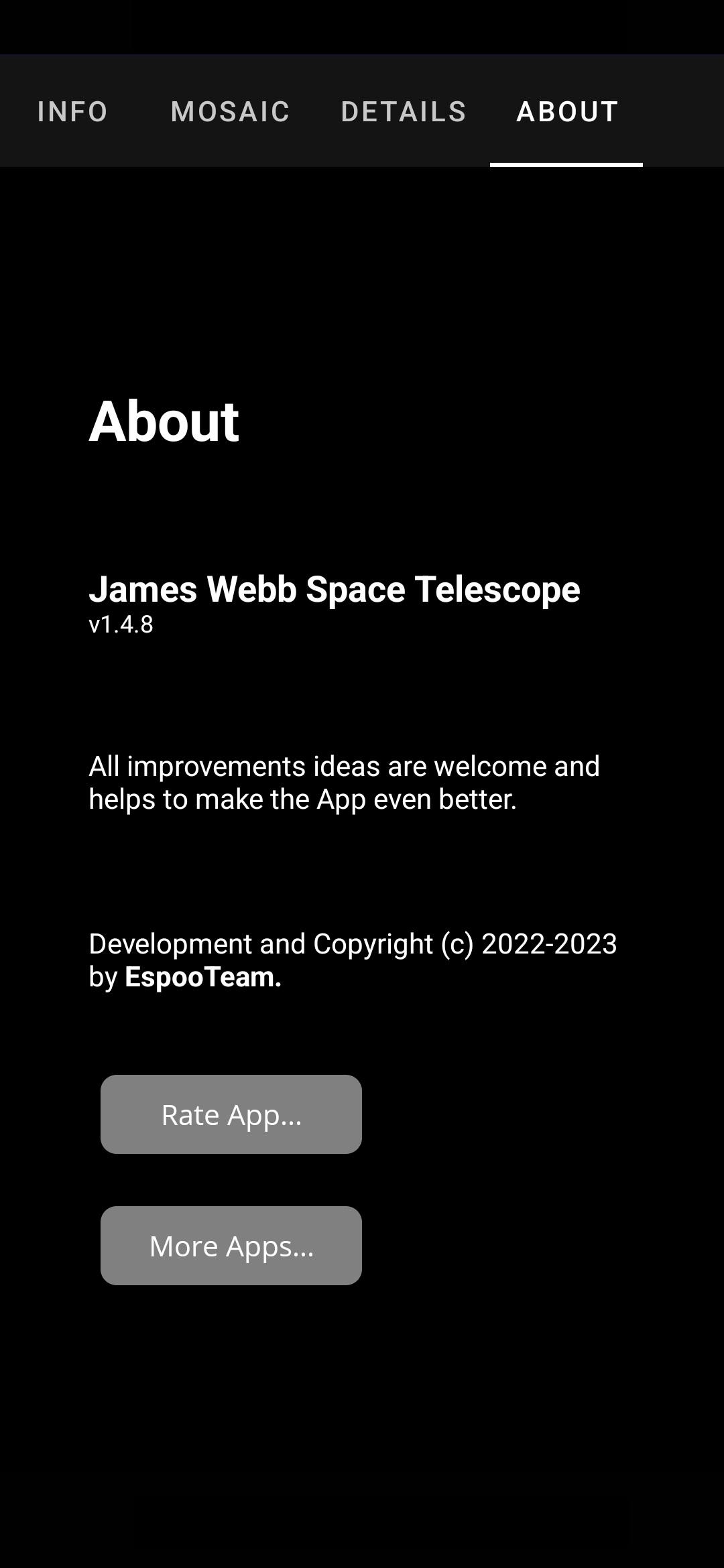See images from James Webb Space Telescope.
Features:
- General info about James Webb Space Telescope.
- Mosaic view
- List view with image and info
- Details view with more detailed description
- Zoomable high-resolution image view
- Detailed info:
- Image description
- Image release date
- Type of image object
- Distance
- Image credit info
- External Web links for more details for each image
All improvements ideas are welcome and helps to make the App even better.
Development and Copyright (c) 2022-2023 by EspooTeam.
James Webb Space TelescopeMission Overview:
The James Webb Space Telescope (JWST) is a state-of-the-art space observatory designed to explore the earliest and most distant objects in the universe. Launched on December 25, 2021, it is the most powerful and expensive space telescope ever built, with an estimated cost of $10 billion.
Scientific Objectives:
JWST's primary scientific objectives include:
* Studying the first galaxies and stars that formed after the Big Bang
* Investigating the evolution of galaxies and black holes
* Searching for and characterizing exoplanets and potential signs of life
* Probing the composition and structure of interstellar gas and dust
Technical Features:
JWST incorporates several innovative features that enable it to achieve its scientific goals:
* Large Aperture: The telescope's primary mirror is 6.5 meters in diameter, significantly larger than the Hubble Space Telescope's 2.4-meter mirror. This allows it to collect more light, enabling it to observe fainter objects.
* Infrared Sensitivity: JWST is primarily sensitive to infrared light, which is emitted by cool objects in space, such as distant galaxies and exoplanets. This allows it to penetrate through interstellar dust and gas, revealing objects that are hidden from optical telescopes.
* Advanced Instruments: JWST is equipped with four scientific instruments: a near-infrared camera (NIRCam), a mid-infrared instrument (MIRI), a near-infrared spectrograph (NIRSpec), and a tunable filter imager (TFI). These instruments allow JWST to obtain images, spectra, and photometry of astronomical objects.
* Sun Shield: JWST is protected from the heat of the Sun and Earth by a large sun shield, which maintains the telescope at a temperature of approximately -233 degrees Celsius (-387 degrees Fahrenheit). This allows the telescope's instruments to operate at their optimal sensitivity.
Early Discoveries:
Since its launch, JWST has already made several groundbreaking discoveries, including:
* The deepest and sharpest infrared images of the early universe, revealing thousands of galaxies that formed within the first billion years after the Big Bang.
* The detection of water vapor in the atmosphere of an exoplanet orbiting a nearby star, providing evidence of a potentially habitable environment.
* The discovery of a massive black hole at the center of the Milky Way galaxy, with a mass four million times that of the Sun.
Impact on Astronomy:
The James Webb Space Telescope is expected to revolutionize our understanding of the universe. Its observations will provide valuable insights into the formation and evolution of galaxies, black holes, and exoplanets. JWST is also expected to contribute to the search for life beyond Earth and the study of the early universe, shedding light on the fundamental questions of our existence.
See images from James Webb Space Telescope.
Features:
- General info about James Webb Space Telescope.
- Mosaic view
- List view with image and info
- Details view with more detailed description
- Zoomable high-resolution image view
- Detailed info:
- Image description
- Image release date
- Type of image object
- Distance
- Image credit info
- External Web links for more details for each image
All improvements ideas are welcome and helps to make the App even better.
Development and Copyright (c) 2022-2023 by EspooTeam.
James Webb Space TelescopeMission Overview:
The James Webb Space Telescope (JWST) is a state-of-the-art space observatory designed to explore the earliest and most distant objects in the universe. Launched on December 25, 2021, it is the most powerful and expensive space telescope ever built, with an estimated cost of $10 billion.
Scientific Objectives:
JWST's primary scientific objectives include:
* Studying the first galaxies and stars that formed after the Big Bang
* Investigating the evolution of galaxies and black holes
* Searching for and characterizing exoplanets and potential signs of life
* Probing the composition and structure of interstellar gas and dust
Technical Features:
JWST incorporates several innovative features that enable it to achieve its scientific goals:
* Large Aperture: The telescope's primary mirror is 6.5 meters in diameter, significantly larger than the Hubble Space Telescope's 2.4-meter mirror. This allows it to collect more light, enabling it to observe fainter objects.
* Infrared Sensitivity: JWST is primarily sensitive to infrared light, which is emitted by cool objects in space, such as distant galaxies and exoplanets. This allows it to penetrate through interstellar dust and gas, revealing objects that are hidden from optical telescopes.
* Advanced Instruments: JWST is equipped with four scientific instruments: a near-infrared camera (NIRCam), a mid-infrared instrument (MIRI), a near-infrared spectrograph (NIRSpec), and a tunable filter imager (TFI). These instruments allow JWST to obtain images, spectra, and photometry of astronomical objects.
* Sun Shield: JWST is protected from the heat of the Sun and Earth by a large sun shield, which maintains the telescope at a temperature of approximately -233 degrees Celsius (-387 degrees Fahrenheit). This allows the telescope's instruments to operate at their optimal sensitivity.
Early Discoveries:
Since its launch, JWST has already made several groundbreaking discoveries, including:
* The deepest and sharpest infrared images of the early universe, revealing thousands of galaxies that formed within the first billion years after the Big Bang.
* The detection of water vapor in the atmosphere of an exoplanet orbiting a nearby star, providing evidence of a potentially habitable environment.
* The discovery of a massive black hole at the center of the Milky Way galaxy, with a mass four million times that of the Sun.
Impact on Astronomy:
The James Webb Space Telescope is expected to revolutionize our understanding of the universe. Its observations will provide valuable insights into the formation and evolution of galaxies, black holes, and exoplanets. JWST is also expected to contribute to the search for life beyond Earth and the study of the early universe, shedding light on the fundamental questions of our existence.

